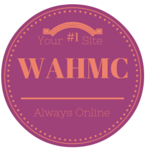In reading articles about medical transcription, speech recognition technology is frequently mentioned as a game changer. This is important news for anyone considering a career as a medical transcriptionist. While traditional training hasn’t always included this technology, due to a changing landscape within the industry, it is highly recommended that newcomers are aware of this and select a medical transcription course that includes speech recognition.
What is Medical Transcription?
Very simply put, each time a doctor sees a patient, she must record notes on what transpired during the visit. More often than not, doctors dictate this information into an audio device and rely on a transcriber to turn it into a written report, which is then attached to the patient’s medical file.
Taking this a step further, medical transcription editors are part of a specialized niche who edit and make any necessary corrections to reports generated by speech recognition software. In essence, those trained in speech recognition technology are trained for two careers. They are not only trained to become medical transcriptionists, but they receive specialized training as editors, as well.
What is Speech Recognition Technology?
In medical transcription, speech recognition technology (also referred to as voice recognition) is the software used for dictating notes that are automatically transcribed into written reports. Much like similar technologies used for word processing, a person merely needs to speak words into a device and the same words are generated into written form via computer. While some may believe that this new technology may make it unnecessary to hire someone trained in medical transcription, speech recognition editors are still needed to manually correct and edit errors within this process.
What Does a Shift in Technology Mean to Transcriptionists?
In order to maintain marketability, it’s important to be educated on the latest software used in an industry and to find a way to work in tandem with it. For medical transcription, speech recognition software is gaining in popularity. It is, therefore, highly recommended that individuals considering a career in this industry be aware of its importance and seek schools offering medical transcription speech recognition training in order to access transcription editing work.
Where Can I Learn More About Medical Transcription Training?
While online medical transcription courses and traditional brick and mortar training locations in this field abound, prospective students must be diligent in seeking out the training course that is right for them. A few tips to consider when doing so include:
- Making sure that the course you select has a good rating with the Better Business Bureau
- Assuring that the course selected meets the high standards of the Association for Healthcare Documentation Integrity (AHDI)
- Determine whether or not the course specifically offers medical transcription speech recognition training
- Does the course fit your lifestyle? For example, some will require months of in-person training in a classroom setting, while others may offer online training and support, which may be a better fit for a busy lifestyle
Is Medical Transcription a Lucrative Work at Home Career?
It certainly can be! Some lay estimations are that as many as 75% of all medical transcription reporters work from home, but the Bureau of Labor Statistics (BLS) reports that 36% of transcriptionists work in hospitals, while another 23% work in doctor’s offices. Their website also states that many transcriptionists work from home, which may account for the additional 41% of transcriptionists. The State University of New York Orange (SUNY Orange) website, which uses the Career Step online curriculum to train new students in medical transcription, touts that those who complete the course can expect to earn up to $40,000 per year working at home.
Once upon a time, medical transcription training was obtained either on the job or at an actual training location. Today, however, medical transcription speech recognition training can be obtained through home study courses, which allow students to learn at their own pace while preparing for a new career. The BLS further reports a good outlook for growth and future employment within the field.
As far as we can tell, in order to enter a career in medical transcription, speech recognition technology fluency is not yet mandatory. However, in a stable field with a growing future, if a new technology trend is developing why would anyone opt for a training program that doesn’t include it? If this career interests you, keep this in mind and choose wisely!

